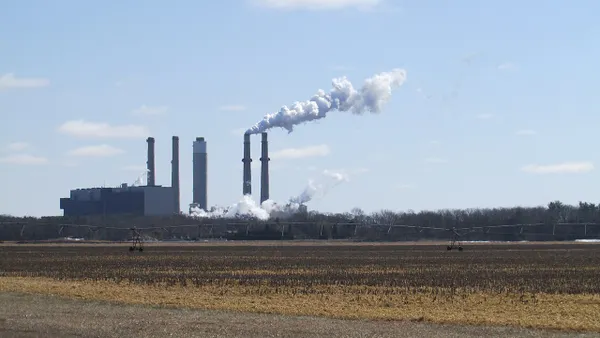The following is a contributed article by Mark A. Gabriel, president and CEO of United Power.
The shifting sands of the electricity business have meant dramatic changes for all players across all segments of the industry, the increased engagement of end users and a fundamental rethinking of power supply, transmission and delivery.
It is why, for the nation's cooperative world, we need T&Gs versus G&Ts. The current G&T model cannot respond quickly to changes in our industry. We need to move to a generation and transmission model that is nimble and responsive to changes in the electric industry. We need a model that can pivot quickly as we continue to innovate new energy solutions.
The business model of centralized generation has been fraying for more than a decade, a combination of the expansion of regional transmission organizations that allow the movement of electrons at lower costs to the localization of power creation, as close as a neighbor's solar rooftop. Consumer choice, energy mix and the onslaught of movement towards a reduced carbon future make the business model of the traditional generation world obsolete.
Transitions are painful, emotionally and economically but the dislocation and disintermediation roll on, nevertheless. Every industry has seen these changes and organizations that fail to rise to the challenge are left on the roadside.
In telephony, the family of Bell Telephone Companies failed to understand the advent of cellular technology and were crushed as the market moved away from landlines. They were further behind the curve when businesses switched to voice-over-internet protocols. Kodak, which invented the digital camera was unable (or unwilling) to recognize everything would be digitalized. Sony "owned" the portable music player market yet became so locked on form factors they failed to see the movement, also to digital. Ford, GM and Chrysler underestimated the move to electric vehicles and are trying to play catch up hoping to stall long enough to sell off existing factories.
Time waits for no technology or embedded infrastructure to be paid off. It simply moves on and efforts to stem the tide have no impact.
The old business model of G&Ts must move forward into the future with all due speed and haste. Holding onto assets that have zero market value (or even less than zero value due to legacy obligations for remediation), trying to restrain the advent of renewable generation, curtail market expansion or prevent the exodus of distribution utilities seeking a different future is futile in the long run, painful in the mid-term and damagingly expensive in the short term. United Power is not alone in having these concerns. Co-ops across the country are raising their voices for change and are starting to organize together as demonstrated by the formation of the NextGen Co-op Alliance earlier this summer.
Limiting the freedom to increase carbon-free resources or add storage to meet member demand also flies in the face of the cooperative principles to which the cooperative community is bound and directly conflicts with the needs to support members. When communities want to supply their own power in different ways and by different means, it is incumbent on the cooperative to listen and react.
While the pressure has certainly come to the generation side of the G&T world, the transmission business is as robust, critical and desired as ever. In fact, transmission is clearly the key to the movement of electricity today as it was 100 years ago. It is also the safe haven for transmission owners as markets continue to play an increasingly important role. In the West, in particular, even one of the largest and most modern coal plants operated last summer at a 15% capacity factor — uneconomic in any situation.
Cooperatives may not need much in the way of centralized generation owned by a single organization in the near future, but clearly need an organization to invest in and manage the "big wires". The bulk transmission system is the critical value in today's G&T world and will remain so for many decades to come.
The move, therefore, needs to be for the G&T to become the T&G: providing the powerful backbone to supply its cooperatives (and others) and back away from the notion that all generation needs to come from a single source. There are simply too many options for generation today and into the foreseeable future. For smaller utilities it might still make sense to commit to 30-year power plants or purchase power agreements. For others, especially larger cooperatives, it may not.
What then of the generation assets, both now and into the future? As the current valuation of coal and related assets plunges, there is clearly the need to write down or to find other ways to offset costs. This may lead to assuming debt into the future but clearly we should not continue to invest in technology (and fuels) that are no longer viable. It must have been painful to throw away the Walkman, film camera or eight-track player (and the car it came in) that still worked but the world moved on. For the future, optionality is the key whether it is utility-scale solar, wind or storage. Planning for generation needs based on a 1960s paradigm is no longer viable.
Delaying the inevitable march toward a new energy future does not make sense. The time to make the change is now — not 10 years from now.






















